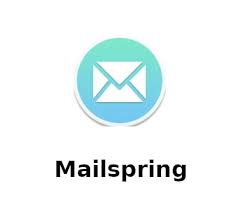Mailspring — Cross-Platform Mail Client with a Clean Look
General Information
Mailspring grew out of the old Nylas Mail project after it was rewritten for speed and stability. Unlike heavy enterprise clients, it’s meant to be quick, minimal, and easy to run on Windows, macOS, or Linux.
The free edition covers the basics — multiple IMAP accounts, unified inbox, and fast local search. Some people move to it from Thunderbird because they want something lighter, others use it just to keep Gmail, Outlook.com, and work accounts all in one place without relying on a browser.
How It Works
Mailspring is built on Electron, so technically it’s a web app wrapped for desktop, but it feels native enough. Accounts connect through IMAP/SMTP, nothing proprietary. Mail headers and indexes are cached locally for instant search, while bodies stay synced with the server.
For everyday use it’s pretty simple: open the app, check the unified inbox, reply, archive, move on. Paid users unlock extras like snooze, read receipts, and templates, but the core client works fine without them.
Functions
Feature | What you get in practice
—|—
Multi-account | Add Gmail, Office 365, or any IMAP account
Unified inbox | All accounts shown in one place
Fast search | Local index makes search nearly instant
Cross-platform | Windows, macOS, Linux
Clean UI | Minimal layout, optional dark mode
Pro features | Snooze, templates, read receipts (subscription)
Installation Guide
1. Download the installer for your OS.
2. Run it like any desktop app.
3. Add accounts with IMAP/SMTP settings.
4. Set unified inbox or keep accounts separate.
5. Adjust preferences (themes, notifications).
Nothing unusual here — it’s a desktop program, not a server.
Everyday Use
– Freelancers like it because they can juggle personal + work accounts without browser tabs everywhere.
– Students install it as a cleaner alternative to Thunderbird.
– Small offices roll it out on Windows PCs when staff just need mail and search, no collaboration extras.
It feels like webmail in terms of look, but it’s local, no ads, no tracking.
Limitations
Mailspring doesn’t support Exchange ActiveSync, only IMAP. Pro features need a subscription. Being an Electron app, it’s a bit heavier on RAM than native clients. And while it looks modern, it lacks calendars or advanced plugins that Thunderbird or Outlook provide.
Comparison
Tool | Platforms | Strengths | Best Fit
—|—|—|—
Mailspring | Win/macOS/Linux | Clean UI, unified inbox, fast search | Freelancers, SMBs, students
Thunderbird | Multi-platform | Feature-rich, customizable | Power users, Linux admins
Outlook | Win/macOS | Full Exchange/365 integration | Enterprises, corporate staff
eM Client | Win/macOS | Balanced, includes calendar | SMBs, mixed environments
Mailbird Lite | Windows | Lightweight, very simple | Home users, small offices
Notes from the Field
Admins note that the biggest win with Mailspring is how little training it needs — people open it and just start using it. The only caveat: mailbox indexing can get slow if you sync tens of gigabytes of old mail. For normal use, though, it’s quick and tidy.

